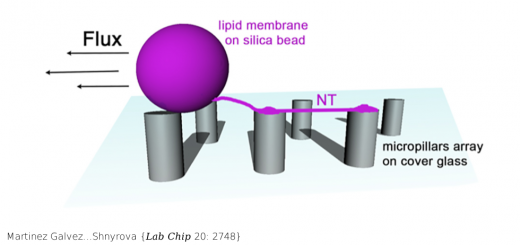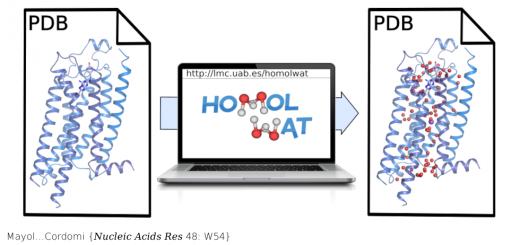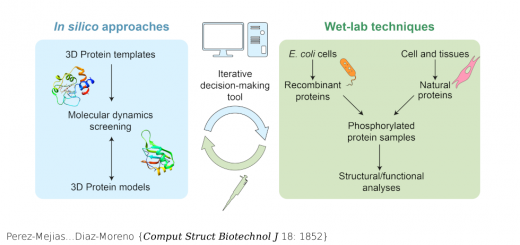Vera…Carrión-Vázquez {Angew Chem 55: 13970}

Protein engineering strategy to directly measure the rupture forces of a protein-protein pair (red) by force spectroscopy, using an atomic force microscope: An elastic “molecular staple” (blue), whose length acts as a fingerprint to identify the rupture event in a recording, is covalently built in parallel to the intermolecular interaction.
Direct Identification of Protein-Protein Interactions by Single-Molecule Force Spectroscopy
Vera AM, Carrión-Vázquez M.
Angew Chem 2016 Nov.; 55: 13970.
BSingle-molecule force spectroscopy based on atomic force microscopy (AFM-SMFS) has allowed the measurement of the intermolecular forces involved in protein-protein interactions at the molecular level. While intramolecular interactions are routinely identified directly by the use of polyprotein fingerprinting, there is a lack of a general method to directly identify single-molecule intermolecular unbinding events. Here, we have developed an internally controlled strategy to measure protein-protein interactions by AFM-SMFS that allows the direct identification of dissociation force peaks while ensuring single-molecule conditions. Single-molecule identification is assured by polyprotein fingerprinting while the intermolecular interaction is reported by a characteristic increase in contour length released after bond rupture. The latter is due to the exposure to force of a third protein that covalently connects the interacting pair. We demonstrate this strategy with a cohesin-dockerin interaction.
PubMed: 27735106. Doi: 10.1002/anie.201605284




